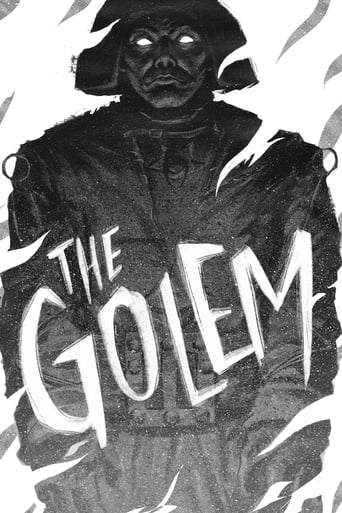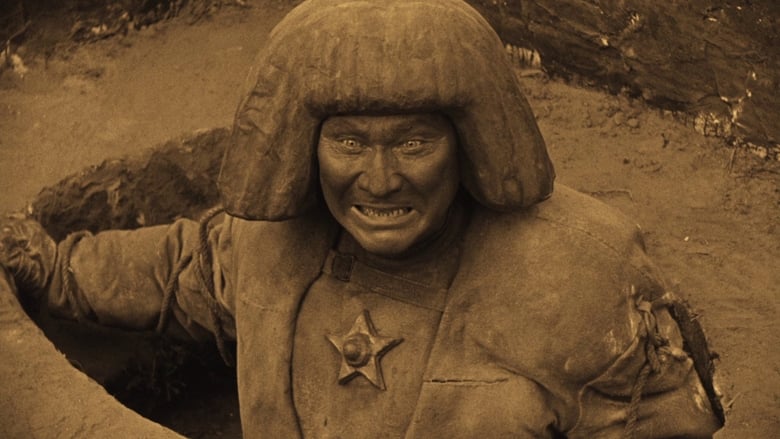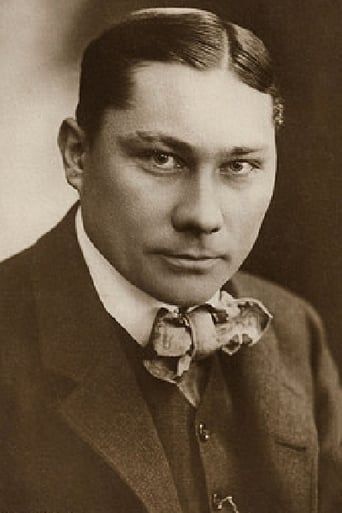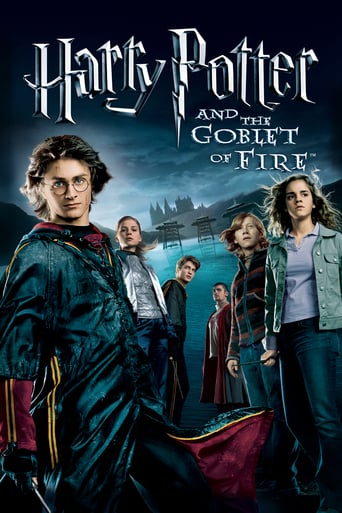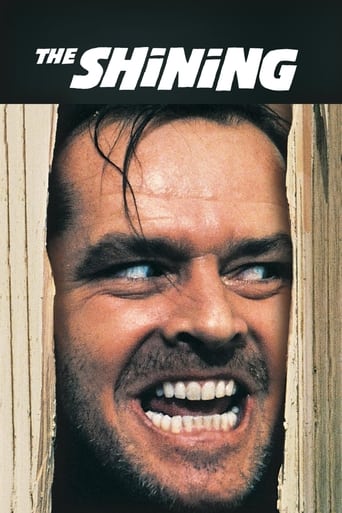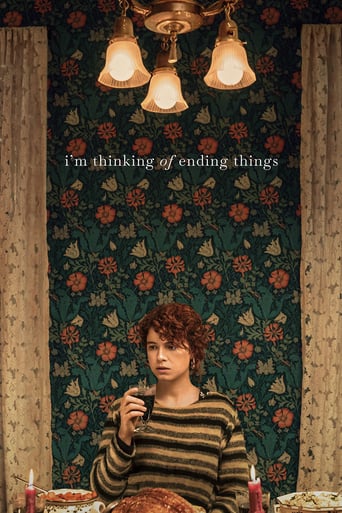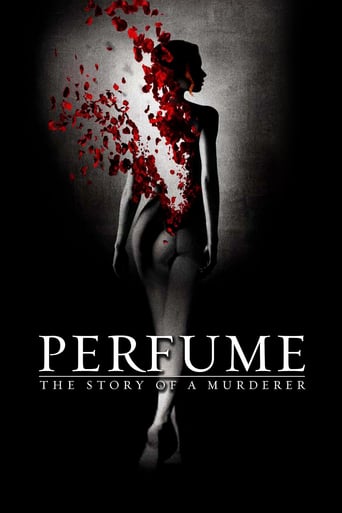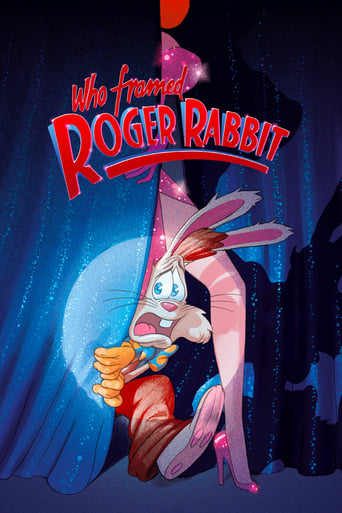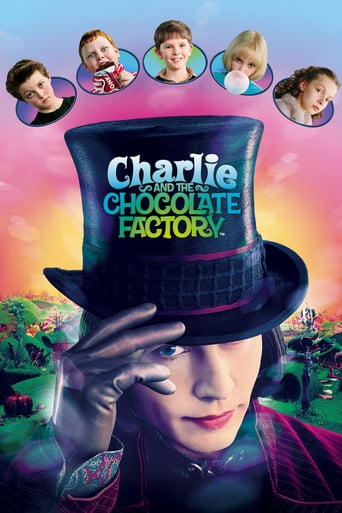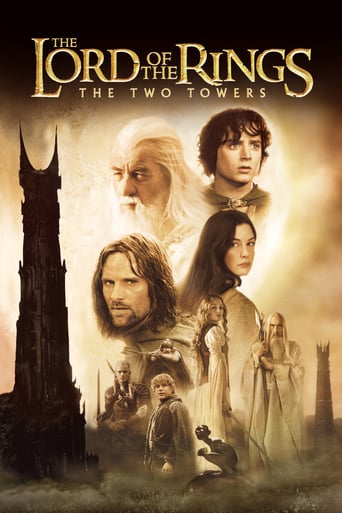The Golem: How He Came into the World (1920)
In 16th-century Prague, a rabbi creates the Golem - a giant creature made of clay. Using sorcery, he brings the creature to life in order to protect the Jews of Prague from persecution.
Watch Trailer
Cast


Similar titles
Reviews
Why so much hype?
If you don't like this, we can't be friends.
Bad Acting and worse Bad Screenplay
It's easily one of the freshest, sharpest and most enjoyable films of this year.
"Fee! Fye! Foe! Fum!"1920's "The Golem" was probably one of cinema's very first live-action superhero stories.In this despairing and overwrought tale of Jewish woe - It sure looked to me like "Wreck-It-Ralph" (aka. the Golem) was definitely having himself a very serious "bad-hair" day.Set in 16th century Prague (where religion and sorcery were joined together, hand-in-hand) - I found (much to my disappointment) that "Wreck-It-Ralph" only turned out to be just a mere errand-boy.And, as a result - "The Golem" (as a motion picture) did not even come close to delivering as satisfactory entertainment.
A feast for the eyes weakened by a dodgy plot, "The Golem" is a silent horror film that pulls you in at once but accomplishes little to reward your interest.Times are about to get bad for the Jewish ghetto of a medieval European city, as Rabbi Loew (Albert Steinrück) discovers watching the stars. Sure enough, the city's prince is planning to cast the Jews out. Loew needs a miracle to save his ghetto, and finds it in the form of a clay figure he animates with help from the dark spirit Astaroth. The golem's power is enough to impress the city prince, but proves too much for the rabbi to handle."Then the lifeless clay will turn against its master, intent on deceit and destruction," the rabbi is warned.Director Paul Wegener does triple duty on this production, co- writing the script and playing the Golem, a figure he portrayed in two prior films, now lost. To say he makes a strong impression is underselling it. Wearing a concrete Beatle wig and giant belt buckle, his expressions range from mute docility to fierce anger once Astaroth's spirit takes over.Alas, "The Golem" is a one-golem show for the most part. The plot point of the Jewish pogrom, so apt for the time and place the movie was made, doesn't actually figure in the movie's resolution. Instead, dramatic tension consists of a romantic triangle between Rabbi Loew's flirtatious daughter, Miriam (Lyda Salmonova); the fey knight Florian (Lothar Müthel), and Rabbi Loew's jealous assistant (Ernst Deutsch), who sics the Golem on Miriam when he catches her with Florian.At least when the film is focused on the Golem, it holds your attention, if not your interest. Wegener does some clever, subtle things with his character. When he first walks outside, you see him react with pleasure to his sunlit surroundings. He shows his teeth when Rabbi Loew attempts to remove his source of power, a five- pointed star worn on the Golem's chest.If there is a film that "The Golem" foreshadows, it is "King Kong," where the beast proves no match for beauty. Just like Kong coveted pretty Ann Darrow, the Golem becomes fixated on Miriam, carrying her off after breaking up her romance with Florian for good.Nothing much comes of this, though. It's a problem I had with the whole film. No sooner does something build into a plot point, whether it be the persecution of the Jews or Rabbi Loew's meeting with the city prince, then it wilts under a lot of light and shadows and we move onto the next scene. I found this movie difficult to watch in a single sitting, short as it was.What makes "The Golem" fascinating viewing are the way the scenes are shot. Cinematographer Karl Freund makes masterful use of the surroundings and Wegener's one-of-a-kind face to dazzle you with image after image of Expressionism run amuk, whether it's the vine-like hinges of Rabbi Loew's house or the gingerbread streets of the ghetto. Wegener's eyes miraculously glow whenever he is on screen, adding wonderment to his ample menace.If only the story was better. Instead, Wegener presents lifeless scenes populated by overemotive characters, when a dollop of realism would have done wonders to give the horror decent grounding. One scene shows the Golem saving the prince, after his retinue makes the mistake of laughing at a mystical show the rabbi performs. We see a ceiling come down but are at a loss as to why. A better film would have set up the scene, and managed a stronger payoff.The movie ends on a note of surprising grace, again like "Kong" cluing us into the idea the fearsome beast had a heart. It involves not Miriam but a little girl, but the end result is the same. Fallen beast, grateful citizens, and a twinge of sadness for what became of our title character.If only the film had more going for it in the way of personality or story, it might live on as something more than cinematic spectacle and historical curio.
"Der Golem, wie er in die Welt kam" or "The Golem: How He Came Into the World" is a German, 100-minute (the version I saw) movie from 1920, so 5 years from now it will have its 100th anniversary. It is a silent film, don't be fooled by soundtracks added later and there is of course no colors in here. Paul Wegener (whose wife plays the female lead, which was pretty common back then) is co-writer, co-director and also the one who plays the title character. He made another Golem movie in 1915, which is apparently lost, but he was not too happy with the outcome and reception, so he gave the subject a new try 5 years later. In-between, in 1917, there is another Golem movie, in which he meets a dancer. I must say, even if I liked the looks of the Golem, I was mostly underwhelmed by this silent film here. Historic references are possibly the most interesting aspect and with the way it references antisemitic people as the Golem has to protect Jews, it is also a bit of a forecast of what is going to happen in Germany in the next 25 years. Anyway, this film here is considered one of the best expressionism films from silent movie Germany, but I cannot share that sentiment. Then again, the genre is not exactly my favorite either. Still, not recommended.
In 16th-century Prague, a Jewish rabbi (Albert Steinrück) creates a giant creature from clay, called the Golem, and using sorcery, brings the creature to life in order to protect the Jews of Prague from persecution. Called "one of the most ambitious productions of the silent era" by Mike Mayo, the film is a blend of religion, astrology and black magic -- mixing Judaism with a conjuring of the demon Astaroth.The film also has an interesting presentation of anti-Semitism, where the emperor accuses the Jews of killing Christ, among other things, and orders them to evacuate the ghetto. How did Germany in 1920 feel about the Jews? We now know how they felt a decade later, but was this hatred always there or invented by Hitler? If it existed, how did it translate to this film's reception by the German people?Paul Wegener's face is a wealth of visions -- he manages to use his eyes in such a way that present the golem as simultaneously stoic and intensely emotional.Others have pointed out that Karl Freund's camera is remarkably still for a man who would go on to be known for the most innovative camera techniques in film history (I dare say he is the greatest cinematographer who ever lived). Mayo says there is an "inventive use of extreme camera angles", but I did not notice. The lack of movement does not hinder the film, however.Lee Price praises the film, saying the only fault of the film is "the inconsistency of the acting", though I did not find it distracting at all (even if the frightened faces of the extras are a bit extreme). Price calls the architecture of the film as influential (or more so) than the German Expressionism of "Caligari". He is not alone in this view: Ivan Butler makes a point to mention the "strange twisted buildings and crooked streets filled with steeple-hatted inhabitants", and Siegfried Kracauer singles out the "maze of crooked streets and stooped houses" devised by Professor Hans Poelzig.If you are to see or own this film, I recommend the Kino DVD. Not only is the film cleaned up nicely, with a wonderful score and English title cards, but the supplements are beyond what one would expect from such an old film -- featurettes comparing this movie to "Faust" and the later "Le Golem". I enjoyed them.

